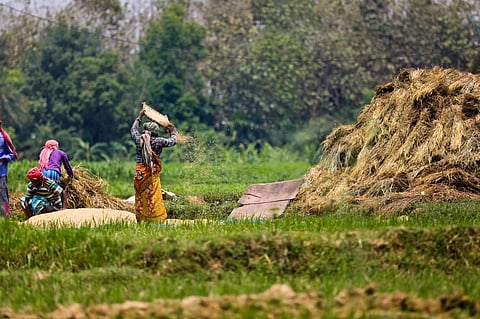Here is why the world needs regenerative agriculture
Regenerative agriculture has recently received much attention from all stakeholders, including producers, policymakers, scientists and consumers.The importance of regenerative agriculture was also emphasised in the Intergovernmental Panel on Climate Change (IPCC) report on “Climate Change and Land.”
The report listed it as a ‘sustainable land management practice’ focused on ecological functions that “can be effective in building resilience of agroecosystems.”
The current intensive agriculture system has led to soil degradation and constant losses. There may not be enough soil to feed the world in next 50 years, according to international scientists.
Soil fertility and biodiversity are decreasing across the globe. It is necessary to regenerate soil on more than four billion acres of cultivated farmland to feed the world, keep global warming below 2 degrees Celsius and stop biodiversity loss.
Regenerative agriculture is a holistic farming system that focuses on soil health, food quality, biodiversity improvement, water quality and air quality.
It improves soil health through practices that increase soil organic matter, biota and biodiversity. It also aims at enhancing water-holding capacity and carbon sequestration.
Regenerative agriculture builds soil health, supports biodiversity and returns carbon and nutrients to the soil. Biodiversity is the prime driver of soil carbon sequestration and other ecosystem benefits. Soil organic carbon and soil organic matter are vital for plant growth.
It facilitates soil aggregation, water infiltration, retention and nutrient cycling. Regenerative agriculture also reduces erosion, provides habitat and food for diverse species and is beyond sustainability.
Regenerative agriculture employs — cover crops, integration of livestock and reduced or zero tillage.
What is it?
There are many definitions and descriptions of regenerative agriculture. The absence of an exclusive definition may lead to multiple challenges affecting — research agenda and budget, consumers’ confidence, policies and technological advancement.
Reducing the use of chemical fertilisers and pesticides, reducing tillage, integrating livestock and using cover crops are the common threads used to define regenerative agriculture.
Regenerative agriculture adheres to the following principles:
- Minimise soil distribution through conservation tillage
- Diversify crops to replenish nutrients and disrupt pest and disease lifecycles
- Retain soil cover using cover crops
- Integrate livestock, which adds manure to the soil and serves as a source of carbon sinks.
Permanent pastures can trap large amounts of carbon and water, reducing farm emissions and polluted runoff. Healthy soil protects land from floods and drought and provides crops with higher nutrient density.
Overall, regenerative agriculture improves the ecosystem’s health, beginning with soil fertility, through a holistic systems approach that includes the health of the animals, farmers and community. It builds resilience and mitigates the effects of extreme weather caused by a changing climate.
How is regenerative agriculture is different from other similar practices?
Sustainable agriculture ensures food production through resource efficiency, making farming economically viable and improving farmers’ quality of life. However, the term ‘sustainable’ implies maintaining the status quo. Sustainable farming practices aim to use only the resources that are available.
Another approach, agroecology farming, shares commonalities with sustainable agriculture. It is a holistic approach that enables interactions between plants, animals, humans and the environment. It brings equity to the food system by offering people a choice over both production and consumption.
Conservation agriculture supports sustainable land management, environmental protection and climate change adaptation and mitigation.
It is 20 to 50 per cent less labour-intensive and contributes to reducing greenhouse gas emissions through lower energy inputs and improved nutrient use efficiency. It also stabilises and protects soil from breaking down and releasing carbon into the atmosphere.
Conservation agriculture is based on three principles — zero tillage, crop diversification and rotation. These preserve soil organic matter and moisture, which help suppress weeds, protect soil from the impact of extreme weather patterns and avoid compaction of the soil.
It promotes nutrient cycling and improved plant nutrition and helps the prevention of pests and diseases.
Regenerative agriculture can be practised under many names and is often also referred to as — agroecological farming, alternative agriculture, biodynamic agriculture, carbon farming, inclusive nature farming, conservation agriculture, green agriculture, organic regenerative agriculture and sustainable agriculture.
However, regenerative agriculture is open, as there cannot be a one-size-fits-all approach to soil regeneration.
It works on the premise that healthy soils are the foundation of regenerative agriculture, which in turn enables the symbiotic relationship between plants and soil microorganisms living in the soil.
Plants, through photosynthesis, provide liquid carbon that feeds the soil microbes. And microbes provide plants with nutrients like potassium, iron, calcium, and others that help them grow and stay healthy, ultimately providing nutrient-rich food for animals and humans. Thus, it’s imperative to support and upscale regenerative agriculture.


